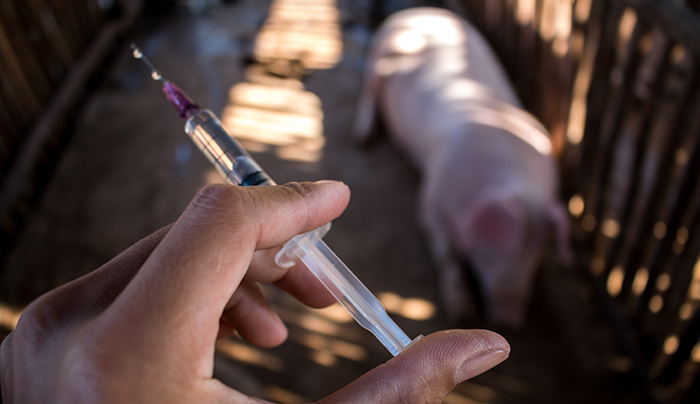The Veterinary Medicines Directorate has revealed that sales of antibiotics for use in food-producing animals have reduced by 53% in just four years between 2014-2018.
The reduction demonstrates the strong and committed approach taken by the UK’s food, farming and veterinary sectors to tackle AMR. The figure comes from the annual Veterinary Antibiotic Resistance Sales and Surveillance (UK-VARSS) report. It builds on reductions previously published by past VARSS reports.
Christine Middlemiss, the UK’s Chief Veterinary Officer, said: “A 53% reduction in sales of antibiotics for food-producing animals in just four years is a testament to the improvements industry and the veterinary profession have made in antibiotic stewardship, training and disease control.
“This is a great example of how real change can be achieved when Government and industry work together including through initiatives such as the Targets Task Force chaired by RUMA (Responsible Use Of Medicines in Agriculture Alliance).
“The focus on infection prevention and control is key to reducing the need to treat with antibiotics and maintaining the UK’s world-leading standards in protecting animal health and biosecurity.”
Total electronic Medicines Book for Pigs (eMB) recorded antibiotic usage in pigs decreased by 21 mg/kg (16%) from 131 mg/kg in 2017 to 110 mg/kg in 2018. This means that total usage has decreased by 168 mg/kg (60%) since 2015.
Usage of HP-CIAs in pigs decreased by a further 0.04 mg/kg (39%) between 2017 and 2018, and has now fallen by 0.92 mg/kg (94%) since 2015.
In-feed is still the most common route of administration, although relative use has decreased from 78% in 2017 to 72% in 2018. Correspondingly, in-water now accounts for 24% active ingredient used (compared with 19% in 2017) and injectables 4% (compared with 3% last year).
A statement from the Pig Health and Welfare Council’s Antimicrobial Usage Subgroup said: “The further reductions in both total antibiotic use and the use of HP-CIAs by the pig sector is testament to the great efforts and commitment of pig producers and their veterinarians to champion responsible antibiotic use.
“Factors contributing to this success include improved industry biosecurity and the new benchmarking tool within the eMB which allows producers to benchmark their antibiotic usage against other producers with similar production systems. This has enabled producers to understand their own patterns of antibiotic use and, alongside their veterinarians, make informed decisions around animal treatments.
“The sector is now well on the way to achieving the challenging target set by the pig sector of reaching 99 mg/kg by 2020. As we approach this target, it is important that producers continue to work with their veterinarians to ensure further reductions don’t compromise animal health or welfare.”
RUMA’s chairman Gwyn Jones said the review not only provides transparency and accountability, but collects information on progress into one place and explains what is underpinning the bigger picture.
“This report shows the granularity behind the very welcome reductions in antibiotics sales anounced by the Veterinary Medicines Directorate at our conference,” he said.
“Overall we have a positive story, with antibiotic sales having more than halved in five years, but each livestock sector is in a very different place. Even within a sector, there can be a wide range of results with some very progressive producers, and others yet to engage.”
Mr Jones said the pig sector is “on track to meet ambitious reductions by 2020”.




